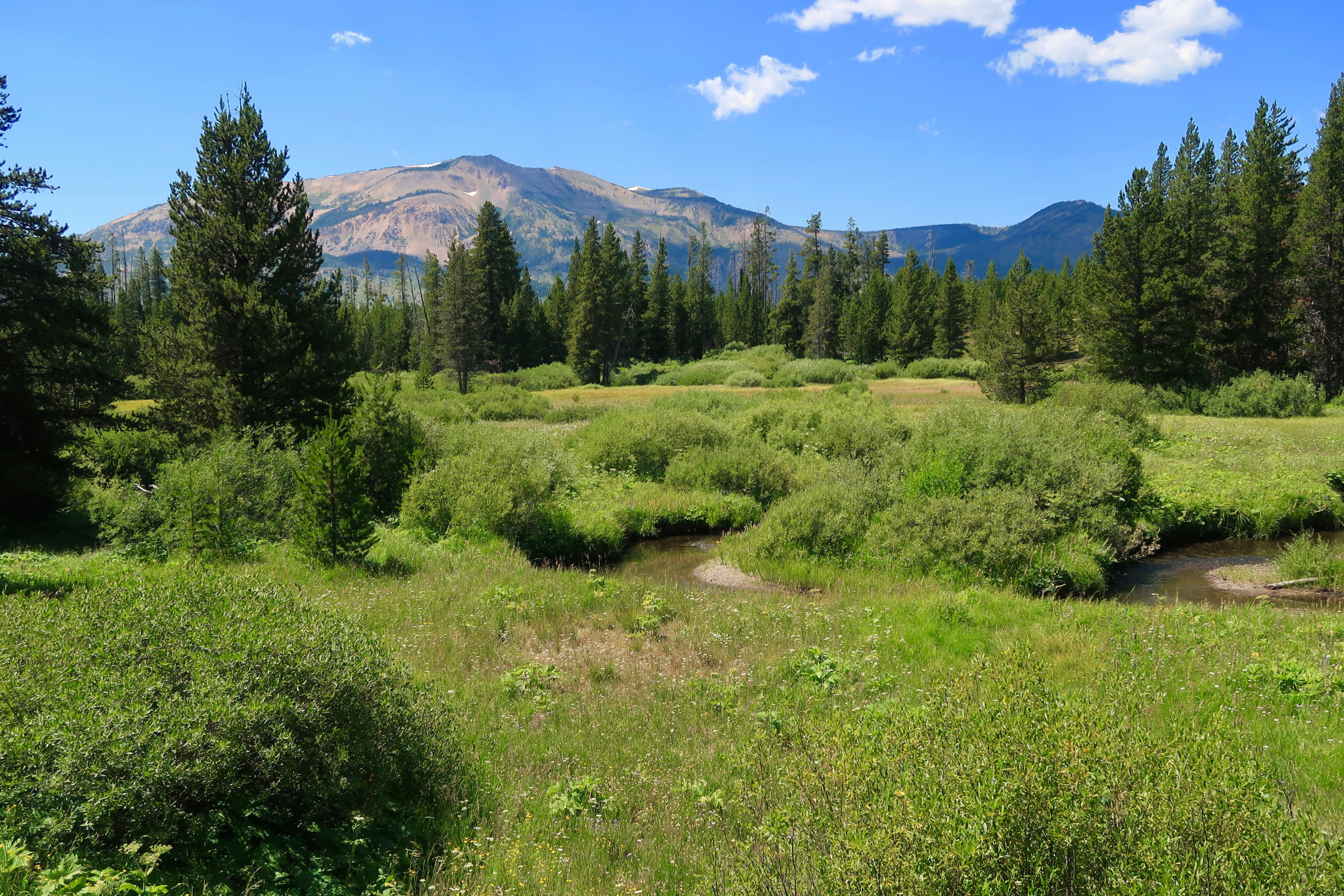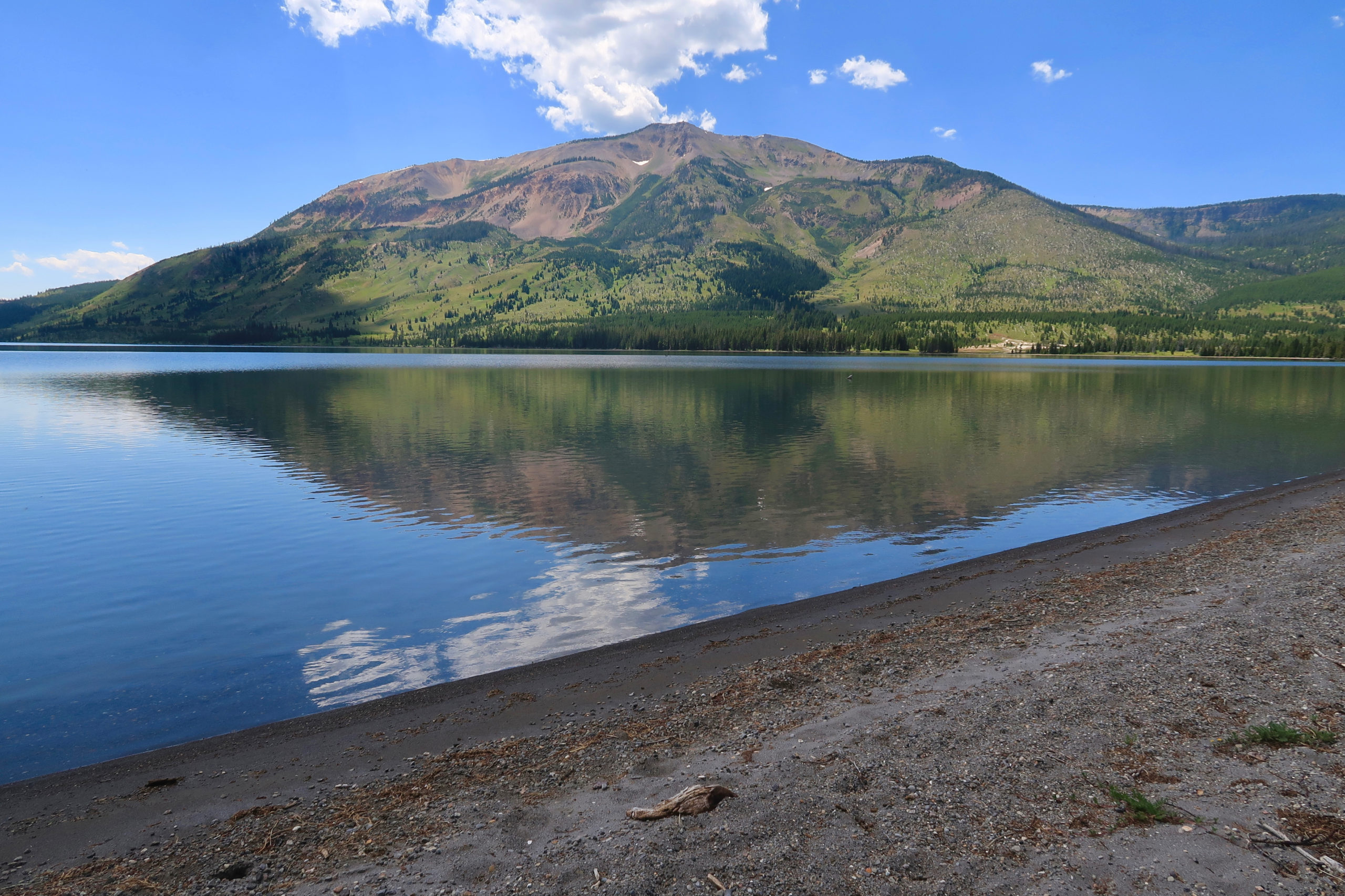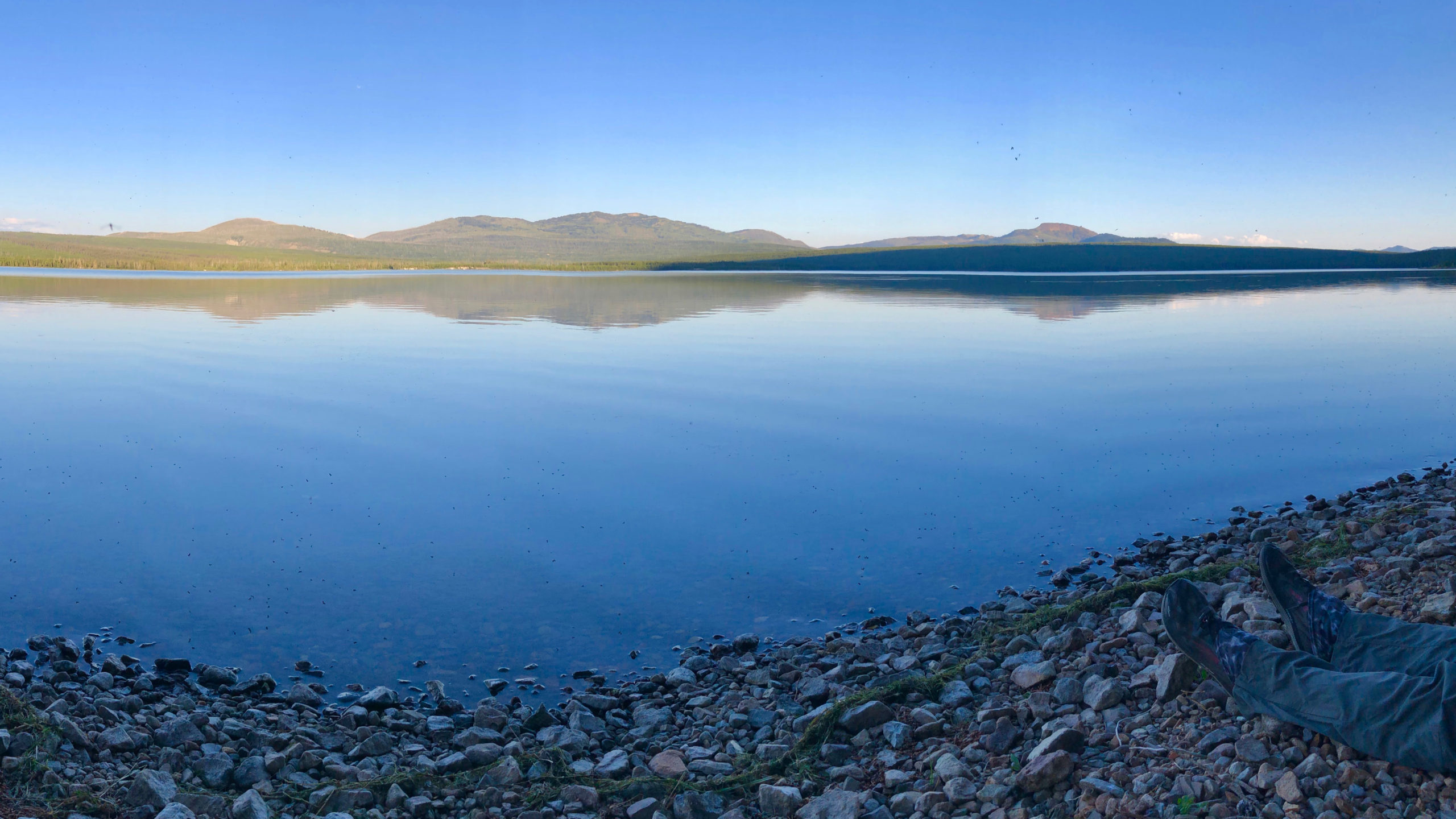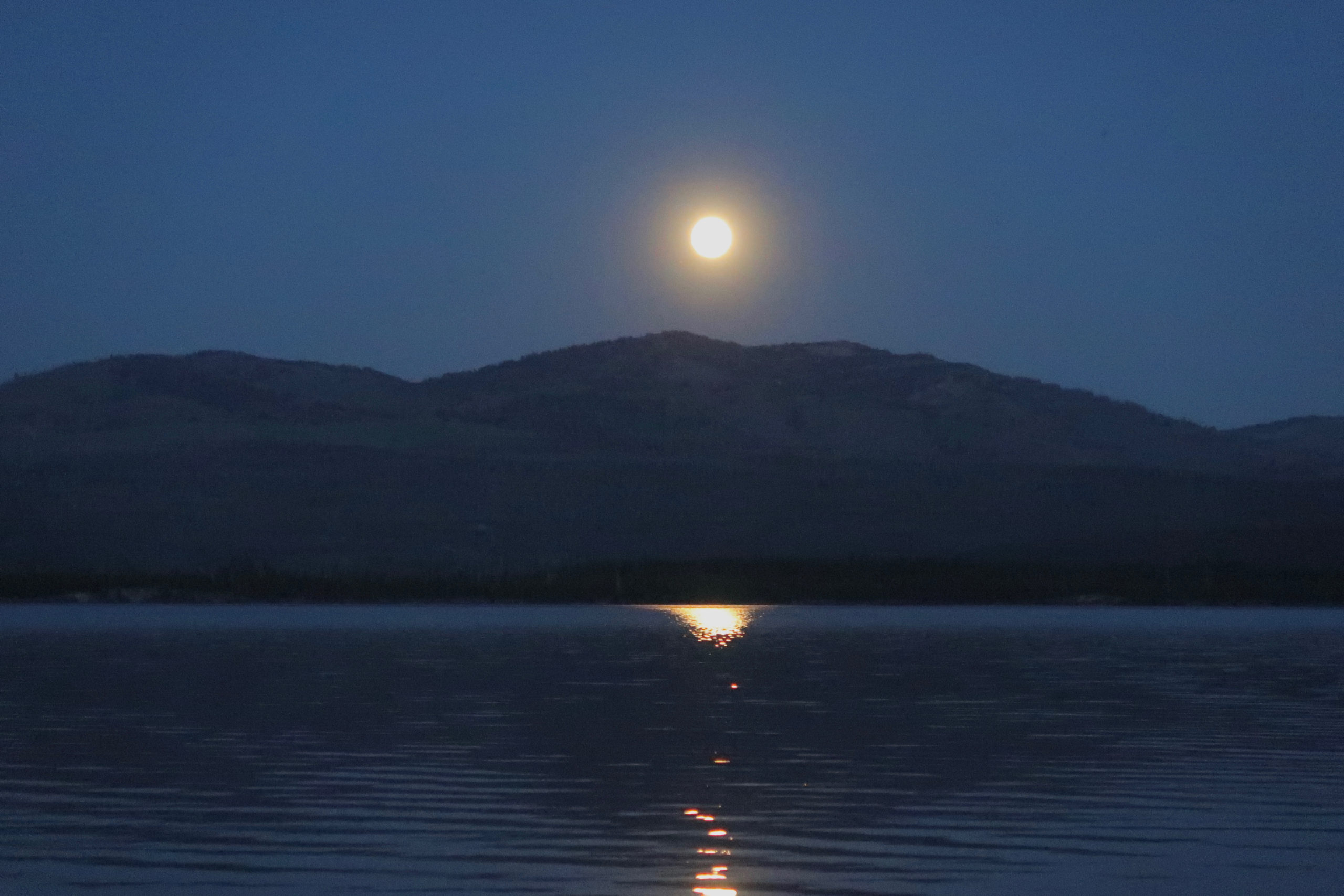Grouse Creek to Heart Lake
Because Yellowstone NP requires you to camp only in designated campsites, our daily mileages on this trip are uneven. We did 18 miles yesterday, but only 10 today. In its own way, that made today sort of a rest day.
We waited until the sun actually hit our camp before getting up, and had a leisurely breakfast of ham, veggies and scrambled eggs. We didn’t hit the trail until the shockingly late hour of 9AM.
The hike started with a climb out of the Yellowstone Lake basin up and over the Continental Divide. The Divide here is so low and gentle that we didn’t really notice it or remark on it. The trail took us past a smaller lake that we had hoped to fish, but (at least viewed from above) it looked shallow and marshy and not really worth the downclimb to check it out.
It was hot. There was little shade. Much of the area is meadows or has recently been burned. Even the forest sections provided minimal shade. Trees are cleared on a 10 foot wide corridor around the trail – perhaps the trail is an old wagon road? Regardless, it is open to the glaring midday sun.
But that sun also brought the wildflowers to their peak, so I should not complain. The meadows are filled with paintbrush, fireweed, monkshood, lupine, yarrows, gentian, geranium and of course numerous unnameable varieties of yellow clusters. Our path through these gardens is barely visible, just a slight trampling of the grass and flowers where somebody passed before. Maybe days before, maybe weeks. The trail often disappears altogether, and we navigate by keeping a sharp eye out for orange tags nailed to trees at the meadow margins.
 Mt Sheridan rises above the boggy meadows east of Heart Lake
Mt Sheridan rises above the boggy meadows east of Heart LakeWe reached the east end of Heart Lake a bit after noon. Our campsite is on the west side, where the geyser basin is, and we still have a way to go. Although small compared to Yellowstone Lake, it is still a very large lake – roughly 3 miles east-west by 2 miles north-south. Mt Sheridan (10,300 feet) looms up behind it, making a fine backdrop as we work our way along the northern edge of the lake. The last mile or so is a beach walk in the black volcanic gravel that makes up the shore.
We turn south and travel along the west edge, gawking up at the steam rising from the thermal area. We encounter other campers at what I think is our campsite, the first people we have seen today. But a check of my permit shows that I have it wrong, our campsite is the next one down the lake, about a hundred yards past the open-air pit toilet.
Securing our food is the first order of business, then setting up tents, then diving into the lake for a swim and cleanup. Well, I dove in, Dan prefers to wade. The lake, like Yellowstone, is shallow and I have to wade out some 50 feet before it is deep enough to swim. But swimming feels great after such a hot and sunny hike. All the little scratches, bug bites, soreness and general irritation just suddenly leave your body and mind when you jump into a clear cold mountain lake.
We lounge on the shore a while, snacking and enjoying the view, then head up to the geyser basin, perhaps a quarter-mile from camp. It is nothing like the Old Faithful area in terms of size and spectacle. That is to be expected – a majority of the geysers on the entire planet are found there. No place really compares.
But our little geyser field is full of wonder and surprises and excitement. We have no idea what to expect. Approaching it from below, all we can see are clouds of vapor rising up. We come to the first cloud and find that it marks a wide spring, its deep blue interior framed by white deposits around its edge.
We follow gurgling sounds and find small vents where water boils busily away, little demons of the earth working tirelessly. A louder rumbling and gurgling to our right captures our attention and we see a column of water rising. It drives six and eight feet into the air, with sudden bursts twenty feet high. The geyser subsides and quiets, its needs and appetites satisfied for the moment.
Moving about, more or less at random, we find new pools, all with slightly different chemistries and colors. We sit in the shade of the lone tree for half an hour, and then the geyser erupts again.
It is still hot, so we make our way back to our shady lakeside camp, planning to return after dinner.
We eat on the shoreline, watching shadows steal across the lake and mount the hills behind. There is a pair of loons fishing a hundred yards out. They are partners. The first thing one does on surfacing is to look about and find the other. They know they need each other to watch for ospreys and eagles, to find good fishing spots, to take care of and to protect each other. That partnership is all they have, all that stands between them and the immensity of this lake, this wilderness, this universe. They hold on tight to one another. As should we.
The sunset is mesmerizing and our camp so comfortable that we lose all ambition to revisit the geysers. A few fish rise on the lake but they are few and far off, well beyond the reach of our Tenkara rods. We instead settle for listening to wolf music as the full moon rises over the flat stillness of the lake.




